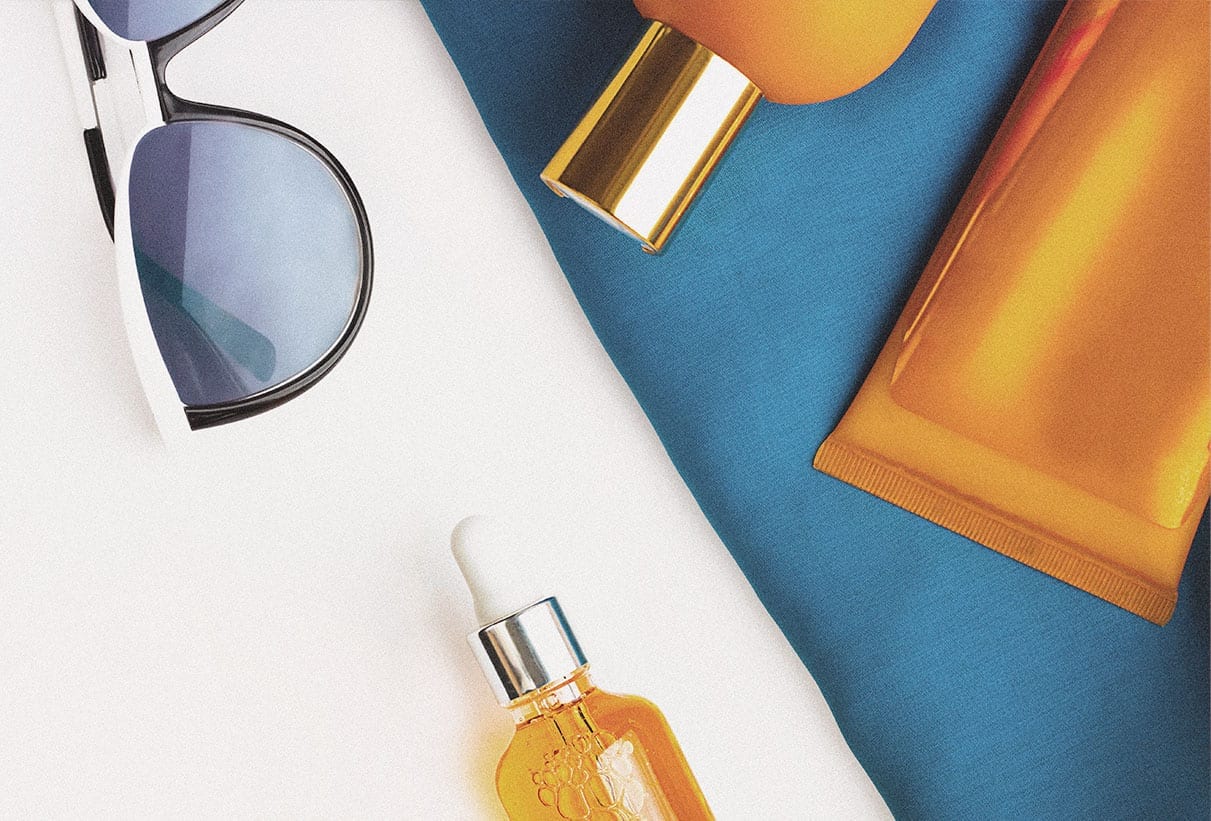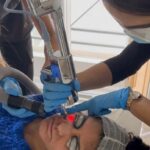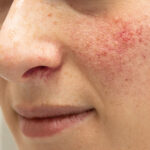
Disorders of increased skin pigmentation, such as melasma and post-inflammatory hyperpigmentation, are common in skin of colour and one of the most common reasons for presentation to a dermatology clinic in darker skin tones. Whilst we know that ultraviolet radiation (UVR) from the sun can worsen pigmentation, we do not talk enough about the effects of visible light and the role it plays or what we can do to mitigate its effects.
Visible light accounts for approximately half of the radiation we receive from the sun (in comparison to UVR which is about 2-5%). Blue light is a component of visible light and is sometimes known as high energy visible light (HEVL); it has a short wavelength (380-500nm) and high energy. Data shows that blue light induces a potent and long-lasting hyperpigmentation in darker skin types (Fitzpatrick 3 and above); you do not see this effect in very fair skin. This means that blue light can contribute to relapses of pigmentary disorders such as melasma as well as causing hyperpigmentation in skin of colour.
The science
How does blue light trigger pigmentation? Well, blue light from the sun is sensed by receptors in the pigment-producing cells of the skin (melanocytes) by a sensor known as opsin-3. This sets up a chain of reactions in the cell which rely on calcium, ultimately leading to an increase of enzymes involved in the pigment-producing pathway known as tyrosinase and dopachrome tautomerase. The enzymes themselves kick-start the production of pigment (melanin) but also result in the formation of a protein complex which further activates more tyrosinase to produce even more melanin. This causes long-lasting hyperpigmentation in the skin – more than would be seen with simply just UVA or UVB.
The problem
Most standard sunscreens only provide protection against UVA and UVB. This will not be adequate to reduce or prevent pigmentation changes in skin of colour.
The solution
Sunscreens with iron oxide can efficiently protect against blue light. Studies show that sunscreen containing iron oxide is significantly more effective in the treatment and prevention of relapses of melasma, for example, than standard sunscreens.
Sunscreens with iron oxide I like (no conflict of interest):
- Bioderma Photoderm M
- SkinCeuticals Physical Fusion UV Defense
- NeoStrata Sheer Physical Protection
- Avène Tinted Mineral Fluid SPF 50+
- Exuviance Sheer Daily Protector SPF 50
Final thoughts
If you have skin of colour and are concerned about pigmentation, it is important to think about a sunscreen with iron oxide as an ingredient. The blue light effect on pigmentation seems to be limited to Fitzpatrick skin type 3 and above only, based on current data (see also my blog on Fitzpatrick skin types so you can confirm your personal type!). If you yourself are a provider of skincare advice, ensure you are recommending the right types of sunscreen to your patients or clients.





